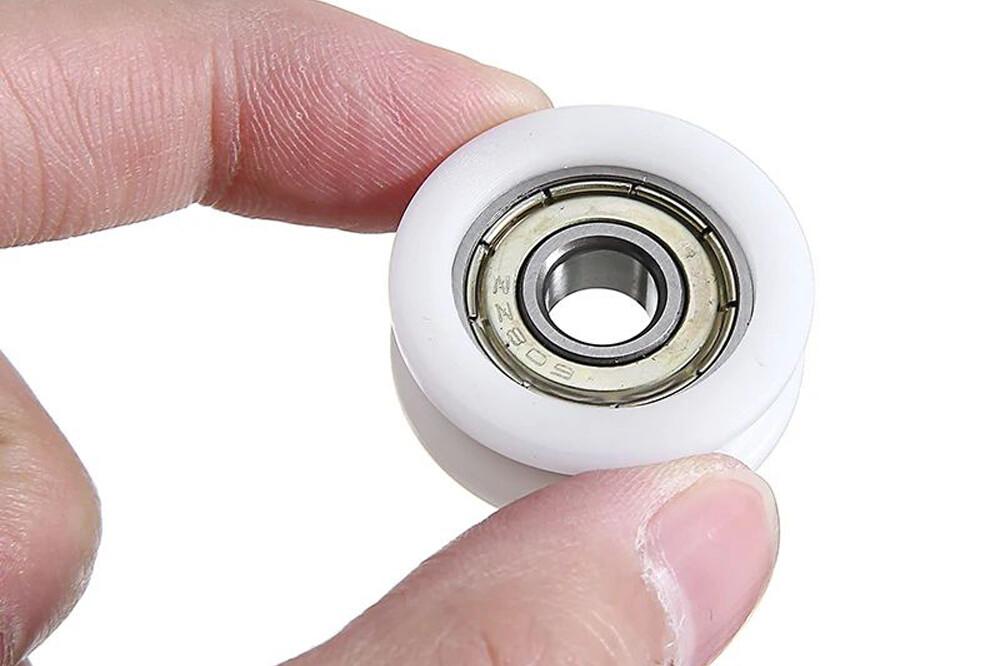
Bearing Manufacturer & Supplier
Specialize in ball bearings, roller bearings, thrust bearings, thin section bearings etc.
The Ultimate Guide to 608 Bearings
Bearings play a vital role in the rotation of all mechanical components and are devotees of the rotation of various components. Bearings can be found in almost all machines, setting the standard for precision, efficiency and versatility. Among them, micro bearings occupy an important position in various precision machines and have become the preferred bearings in 3D printers, advanced skateboards, dental equipment, precision motors, robots, semiconductors and other industries. 608 bearings are the most common type of miniature bearings. Understanding 608 miniature bearings is crucial for designers and engineers during the prototyping stage.
Table of Contents
ToggleInformation about 608 bearings
Part Number | 608 | Cage Material | 300 Series Stainless Steel |
System of Measurement | Metric | Radial LoDynamic Radial Loadad | 629.775 lbf |
Bearing Type | Ball | Static Radial Load | 248.175 lbf |
For Load Direction | Radial | Max Speed (X1000 rpm) | 34 |
Construction | Single Row | Lubrication | Required |
Inner Ring Type | Standard | Shaft Mount Type | Press Fit |
Seal Type | Open | Temperature Range | -30° to 110 °C |
Bore Dia | 8 mm | ABEC Rating | ABEC1 (Available in ABEC3/5/7) |
Bore Dia Tolerance | -0.008mm to 0 | Radial Clearance Trade No. | MC3 (Available in MC1/2/4/5/6) |
Outer Dia | 22 mm | Radial Clearance | 0.002mm to 0.013mm |
Outer Dia Tolerance | -0.008mm to 0 | RoHS | Compliant |
Width | 7 mm | REACH | Compliant |
Width Tolerance | -0.12mm to 0 | Ball Dia | 3.9690 mm |
Ring Material | 52100 Chrome Steel | Ball Qty | 7 |
Ball Material | 52100 Chrome Steel | Weight | 11.8 g |
Dimensions of 608 bearings
(1) The inner diameter of the 608 bearing is 8 mm and can accommodate a shaft with a diameter of 8 mm. When selecting 608 bearings, you need to confirm the size of the shaft.
(2) The outer diameter of 608 bearing is 22 mm. This refers to the diameter size of the outer ring of the 608 bearing. When selecting a 608 bearing, make sure the application space can accommodate the outer ring size.
(3) The width of 608 bearing is 7 mm. Width refers to the distance between the inner and outer rings of the bearing. Make sure the bearing width is sized appropriately for your application to ensure proper installation and operation.
608 bearings are widely used and are a common and widely used miniature bearing model. A good understanding of the bearing’s bore, outside diameter, and width dimensions is critical to selecting the appropriate bearing. It is also necessary to select bearings for good performance and reliability for your application based on specific application requirements, load, speed, temperature and quality standards.
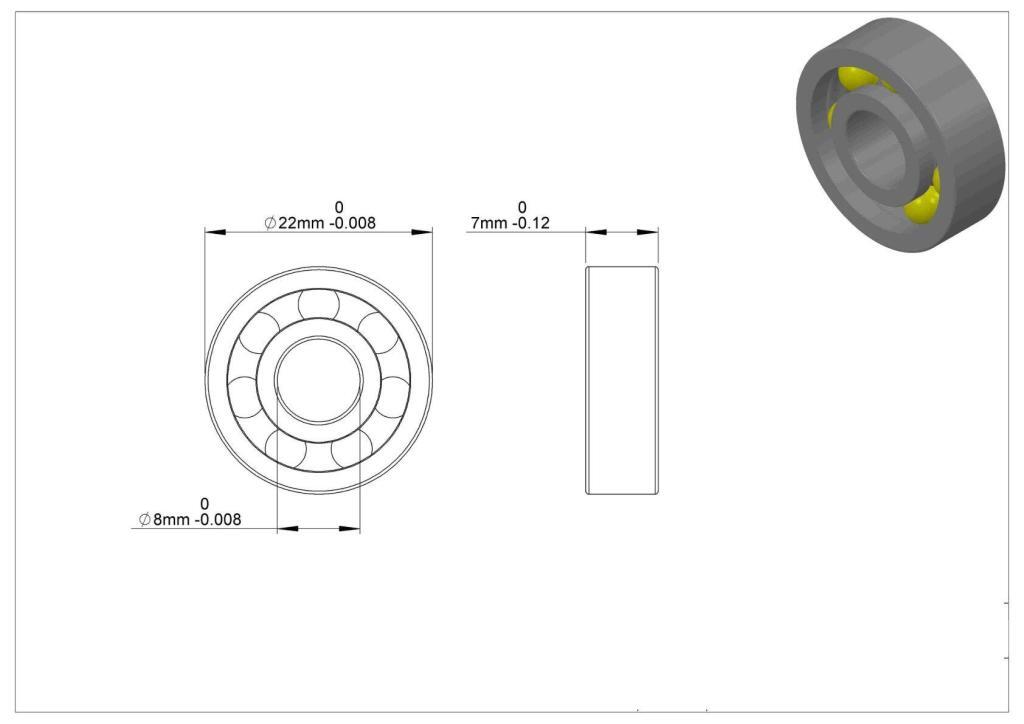
What is a deep groove ball 608 bearing?
Deep groove ball bearings are the most common bearings and consist of an inner ring, an outer ring, a cage and balls. Placing rolling balls between the inner and outer rings of the bearing reduces rotational friction and provides support for radial and axial loads. At the same time, ball bearings also improve the efficiency of mechanical power transmission and are often used in light industrial machinery. The inner and outer rings are usually made of high-quality high-chromium steel through a series of complex processes, such as heat treatment, quenching, annealing, etc. The cage, usually made of a material such as nylon or steel, evenly spaced the balls within the bearing and reduced friction.
A bearing designation refers to a specific type of bearing and follows the standard numbering system established for radial ball bearings by the International Organization for Standardization (ISO). Take 608 bearings, for example, which are a specific size of ball bearings most commonly used in skateboards and roller skates. Among them, “6” is the first number in the bearing model, which usually represents the bearing series, indicating that it belongs to the deep groove ball bearing series. 08: The second and third digits of the bearing model indicate the bore diameter of the bearing in millimeters. For the 608 bearing, its bore diameter is 8 mm, which is a deep groove ball bearing with a bore diameter of 8 mm.
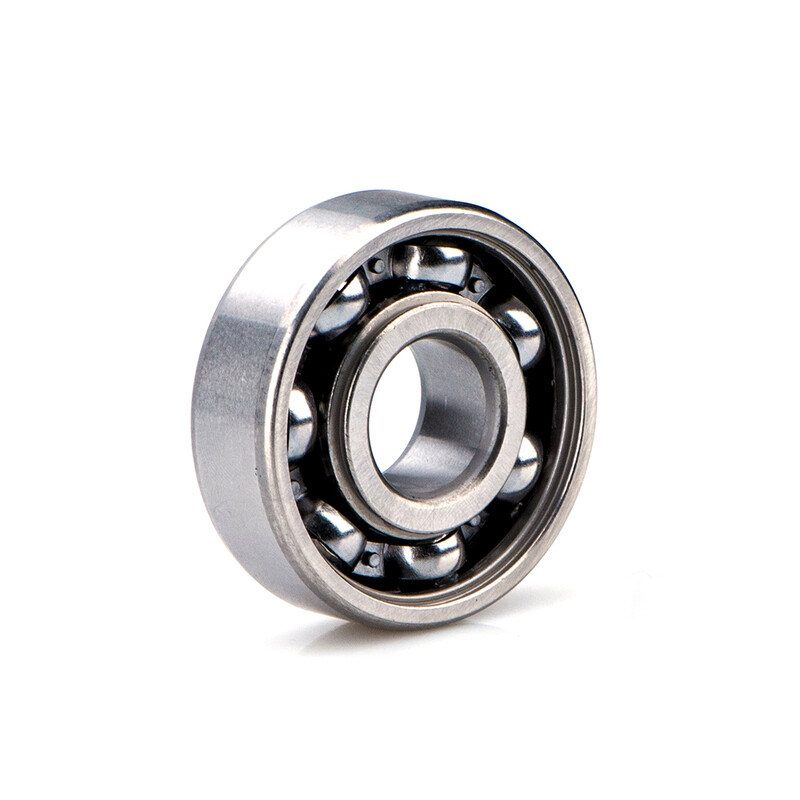
Components of 608 bearings
As mentioned before, bearings are composed of four parts, namely the inner ring, outer ring, rolling elements and retainer. 608 bearings are no exception. The inner and outer rings are usually made of high-quality bearing steel, while the balls are made of steel materials. The cage, usually made of a material such as nylon or steel, evenly spaced the balls within the bearing and reduced friction.
(1).Inner ring
There is a raceway inside the inner ring, and the ball will move in the raceway. The inner ring serves as the rotating element of the bearing and bears the axial load of the bearing.
(2) Outer ring
The outer ring usually serves as a fixed raceway, completing the raceway circuit and encapsulating the entire bearing, and bears the radial load of the bearing.
(3) Ball
The ball is one of the main rotating bodies of the bearing and can rotate smoothly through the separation of the cage.
(4) Cage or retainer
The cage evenly distributes the balls between the inner and outer rings to ensure that the balls do not come into contact during operation.
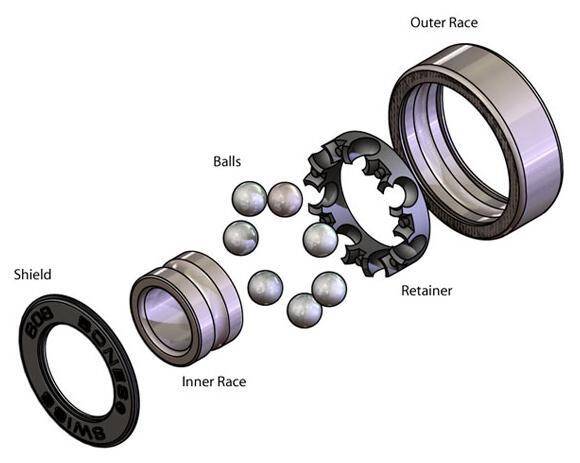
Three types of 608 bearings
608 bearings are used in different environments and use different seal types, which can usually be divided into three types: ZZ, 2RS, and OPEN. We will introduce these three different types one by one to provide you with strong technical support in choosing the right bearing.
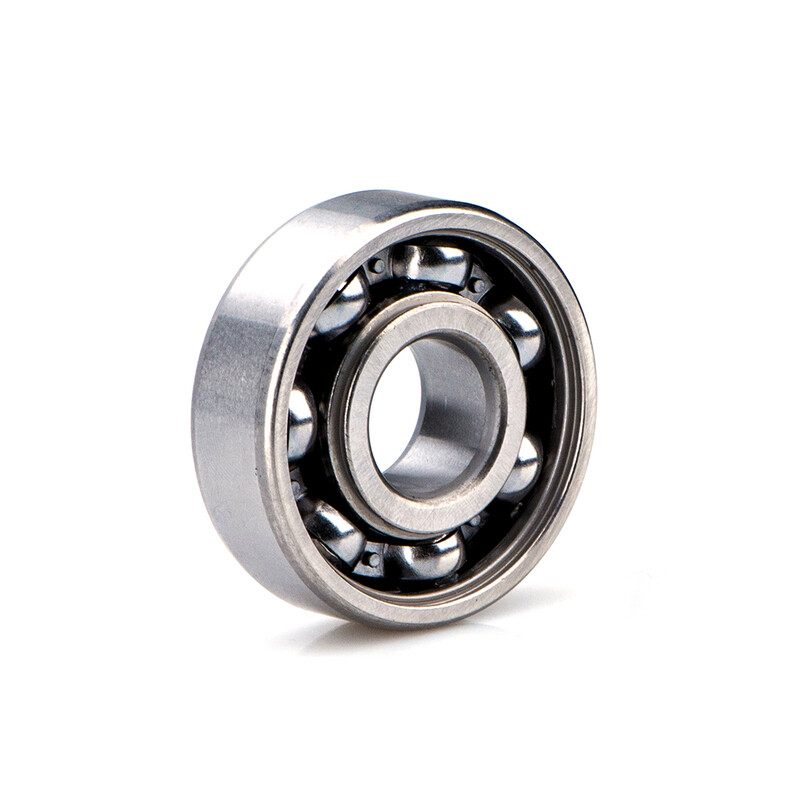
608 Open
The 608 bearing Open is a coverless design, allowing the internal components of the bearing to be exposed to the external environment. This design makes the bearings susceptible to contamination from dirt, dust, and other external particles.
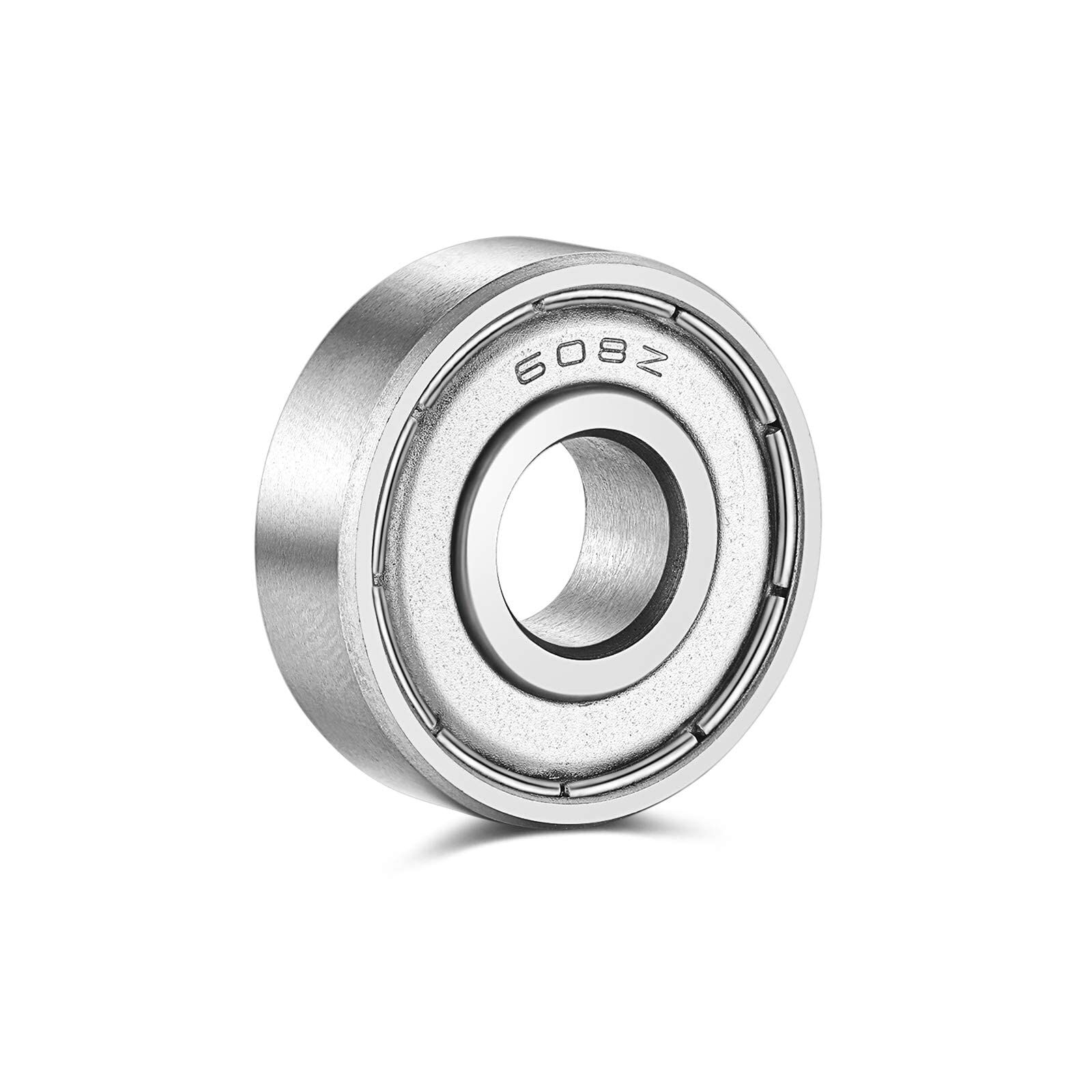
608zz means that its outer cover has a metal shield. The metal shield effectively blocks the entry of dust, contaminants and other external particles while retaining lubricant within the bearing. The standard material of the bearing dust cover is cold-rolled electroplated tin steel plate, and ASI-300 stainless steel is sometimes used.
Bearing seals mainly use nitrile rubber as the material. For high temperature environments, fluorine rubber and silicone rubber are also widely used.
① Silicone rubber: MQ/PMQ/VMQ/PVMP, temperature range: -70~200 degrees Celsius; hardness: 25~80; features: resistance to high temperature and dryness, high wear resistance, aging resistance to sunlight and ozone; Limitations: Poor surface wear and crack resistance.
②Hydrogenated (nitrile rubber): HNBR/NEM, temperature range: -35~165 degrees Celsius; hardness: 50~90; features: heat resistance, high ductility, chemical and corrosion resistance; limitations: not suitable for ultra-low temperature conditions, avoid sunlight Direct sunlight and chemical attack.
③Fluorine rubber: FKM/FPM, temperature range: -28~200 degrees Celsius; hardness: 50~95; features: high temperature resistance, significant chemical corrosion resistance, corrosion resistance to petroleum products; limitations: not suitable for low temperature working conditions .
④Polypropylene rubber: ACM Rubber, temperature range: -18~175 degrees Celsius; hardness: 40~90; features: strong resistance to hot oil, sunlight and ozone erosion and strong crack resistance; limitations: It has poor waterproof performance and is not suitable for ultra-low temperature working conditions.
What is the difference between 608 zz and 608 2rs?
The suffix letters of 608 zz and 608 2RS are different. The suffix letters represent the seal or dust cover configuration of the 608 bearing:
ZZ type: refers to radial ball bearings with metal dust covers.
Shield/Protected: zz means the bearing has a metal shield on both sides, usually made of steel or other metal. These shields provide a degree of dust protection and prevent some light contaminants from entering the bearing interior.
Lubrication: Guards help keep the lubricant inside the bearing from escaping, reducing the risk of contamination.
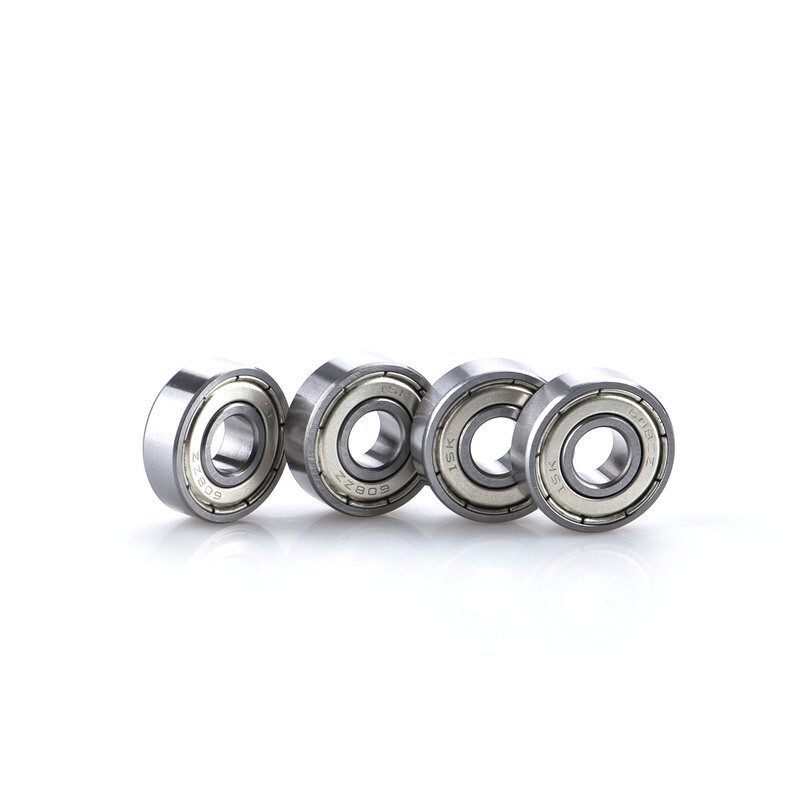
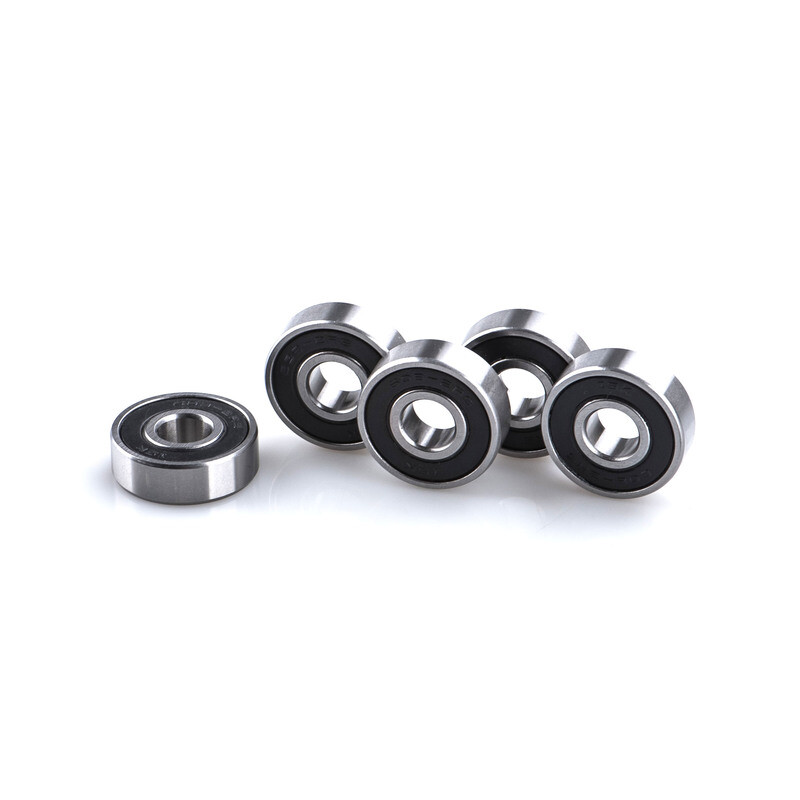
2RS type: Also refers to radial ball bearings, but with rubber seals.
Sealing/Protection: “2RS” means the bearing has rubber seals on each side. These rubber seals are typically made from synthetic rubber such as nitrile or fluoroelastomer and can seal out contaminants such as dust and water effectively than metal shields.
Lubrication: Not only do rubber seals prevent contaminants, they also help maintain lubrication inside the bearing, extending the life of the bearing.
Featuring a metal shield ZZ, it provides good protection against dust, but its sealing effect is slightly inferior compared to the rubber seal 2RS. It is typically used in applications where the environment is relatively clean and lower friction is emphasized.
Features rubber seal 2RS for better protection against contamination, especially in applications where the risk of exposure to water, dirt or other particles is higher. Enhanced sealing is the first choice when it is critical to bearing performance and life.
When choosing between ZZ and 2RS, consider the environmental conditions of your application and the level of protection required against contaminants. Both types are widely used in a variety of applications, including skateboards, inline skates, and other small machinery.
Whether the bearing uses a protective cover or a sealing ring is related to the use requirements of the bearing. The dust cover does not come into contact with the inner ring of the bearing and is a non-contact installation. The sealing ring is in contact with the inner ring of the bearing and is a contact installation. Therefore, the limit speed of the dust cover bearing is higher than that of the sealed ring bearing, and the protection level of the sealed ring bearing is higher than that of the dust cover. The sealed ring bearing has better waterproof performance, and the sealed ring bearing can also better prevent grease from flowing out. . When choosing the right bearing shielding method for your needs, consider the following factors:
(1).Application environment:
Determining the potential sources of contamination and other external particles in the bearing’s application environment is a primary consideration in selecting the appropriate bearing. Depending on environmental conditions, choose open, metal shielded or rubber seals to provide appropriate protection. For example, in high-temperature environments where large amounts of contaminant particles are present, bearings with metal shields are better than open, rubber-sealed bearings.
(2) Accuracy and speed requirements
When choosing a suitable bearing, you must also consider the accuracy and speed requirements of the bearing’s application environment. Open bearings are generally suitable for low precision and lower speed applications, while metal shields and rubber seals provide higher protection and are suitable for medium to high precision requirements. High speed means high temperature, and the load-bearing capacity of the rubber sealing ring must also be considered. Typically, the temperature of bearings with rubber seals is below 200 degrees Celsius. Bearings with metal shields can withstand temperatures above 200 degrees Celsius.
(3) Daily maintenance requirements for bearings:
Of course, choosing the right bearing must consider the daily maintenance needs of the bearing. Open bearings require regular cleaning and lubrication, while metal dust boots and rubber seals reduce maintenance requirements.
Open, ZZ and 2RS are different cover forms of bearings, providing different levels of protection and support. According to the bearing’s application environment, accuracy and speed requirements, and maintenance needs, select an appropriate shielding method to ensure the normal operation of the bearing and extend its service life.
Characteristics of 608 bearings
Single row deep groove ball bearing 608 is a commonly used small rolling bearing. It has the characteristics of small size, light weight, easy installation, reliable quality and low price. It is widely used in various occasions, such as power tools, electric vehicles, and electric skateboards. vehicles, wind turbines, fans, machine tools and water pumps, etc. 608 bearings have low friction and are optimized for low noise and vibration, allowing for high rotational speeds. 608 bearings can support radial and axial loads in both directions and require less maintenance than many other bearings. The material of 608 bearings is generally GCr15 or GCr15SiMn steel. GCr15 steel has excellent wear resistance and impact resistance, and its heat resistance is better than ordinary steel; GCr15SiMn steel has better wear resistance and impact resistance than GCr15 steel, but its heat resistance is slightly worse. Therefore, appropriate materials should be selected based on the usage.
Low friction:
608 bearings are designed for smooth, low friction operation. The deep groove design allows the balls to move freely within the race, creating minimal friction during rotation. This feature helps reduce energy consumption and excess heat.
High speed capability:
Due to low friction and optimized design, 608 bearings can withstand relatively high rotational speeds. This feature is particularly valuable in applications that require rapid rotation, such as electric motors and skateboards.
Ability to withstand radial and axial loads at the same time:
608 bearings can withstand radial and axial loads and are versatile and suitable for a variety of applications where loads act in different directions.
Typical applications of 608 bearings
(1).Skateboards and skates
One of the most typical uses of 608 bearings is in skateboards and skates. 608 bearings provide smooth, low-friction rotation for skateboard wheels, allowing skaters to move easily and maintain speed.
(2). electric motor
In various electric motors such as power tools, small appliances and industrial machinery, 608 bearings are used to support the shaft and reduce rotational friction, thereby increasing the efficiency and life of the motor.
(3). 608 bearings are also commonly used in drill bits, grinders and sanders. These bearings help reduce heat and friction during high-speed operation, ensuring smoother, reliable tool performance.
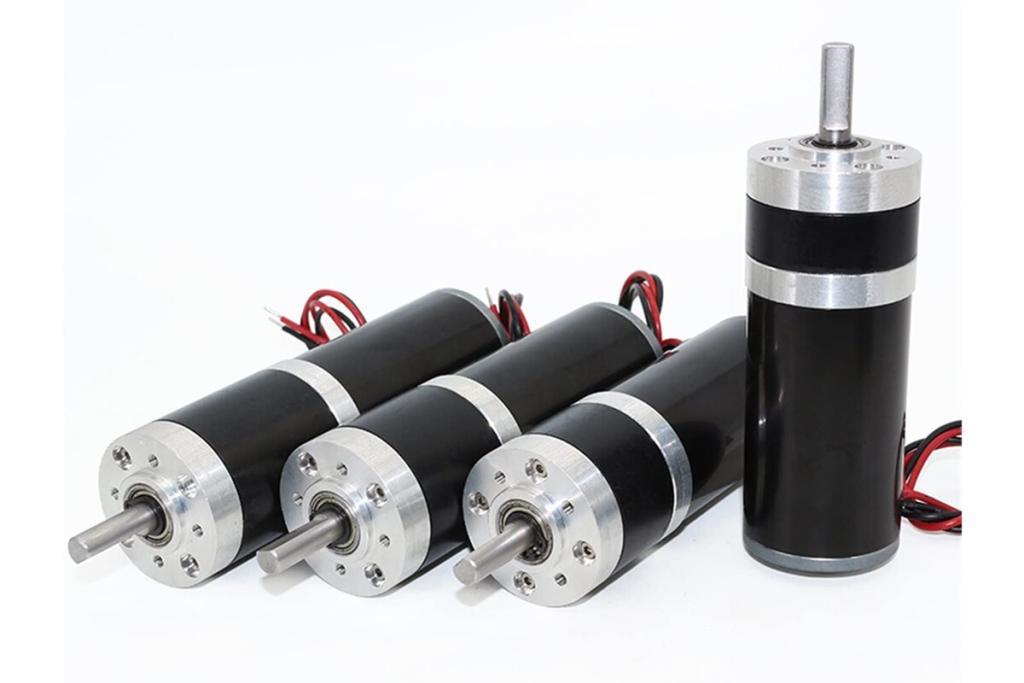
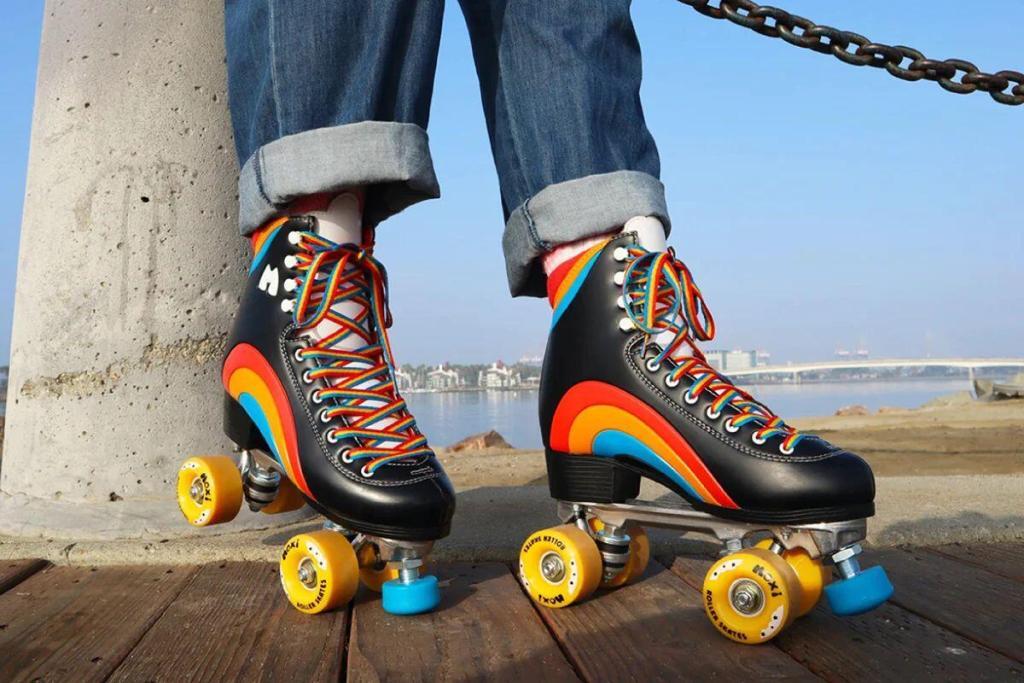
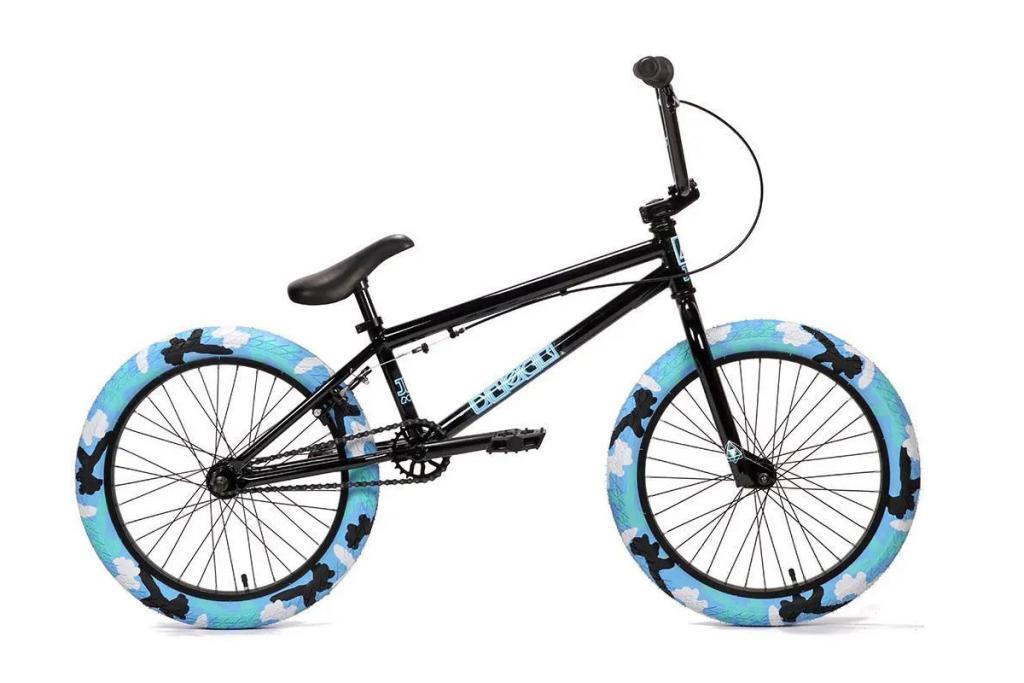
(4)Conveyor system
In material handling and conveying systems, 608 bearings are used to support rotating components such as rollers and pulleys, ensuring smooth and efficient movement of goods in factories, warehouses and distribution centers.
(5) Bicycle
608 bearings provide smooth movement and support for high-end bicycles, enhancing comfort and maneuverability during riding. Plays a vital role in the movement of the bike, ensuring smooth and smooth rear swing arm action.
608 bearings are important components in many industrial applications that require smooth rotational motion, low friction and high reliability. Its versatile design and cost-effectiveness make it a popular choice in a variety of industries, from skateboards to robotics.
You should know the application of 608 bearings in skateboards
There are two types of 608 bearings commonly used in skateboarding:
608zz: ‘zz’ stands for metal shielding, that is, there are metal shields on both sides of the bearing. If it’s a 608z, it has a single “z”; that means it’s shielded by a metal ring on one side and open on the other. 608zz is a bearing for skateboards, with two metal rings on both sides. The downside is that when they get dirty, they are a bit difficult to clean.
608RS/6082RS:
These are the same bearings but shielded with a rubber ring instead of a metal ring. Both have the same performance, but the rubber material is easier to maintain and clean when dirty. Rubbers are preferred over metals because they are easy to maintain.
ABEC Rating:
ABEC stands for Annual Bearing Engineers Council. The organization rates bearings on a scale of 0-9 based on tolerances in bearing speed (RPM). For a skateboard, you really don’t need very close tolerance bearings unless you’re going over 200km/h! ABEC 5 or ABEC 7 is sufficient for skateboard bearings. Please note that ABEC ratings do not take into account material selection, impact resistance, ball grade, lubrication, maintenance, cleaning, etc., which are the most critical parts of skateboarding. ABEC ratings do not take into account axle loads, some of the most important parts of skateboarding. Most skate bearing companies don’t really mention the ratings of their bearings because the ratings don’t do it justice.
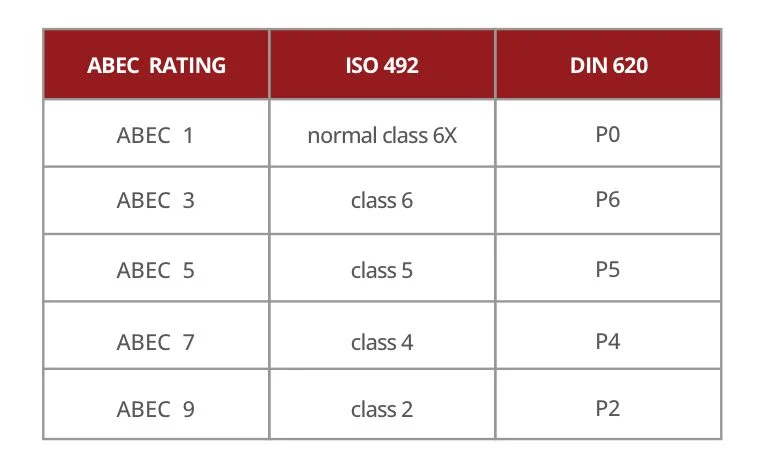
Ceramic 608 bearings
Ceramic 608 bearings perform really well in practice. Ceramics are very hard, resistant to corrosion and heat. It has all the qualities you need in a skateboard bearing :). Therefore, the performance of ceramic 608 bearings is better than other metal bearings, but the price is also high. Because it is not prone to corrosion and is resistant to high temperatures, it also has a longer service life than metal 608 bearings.
Three stages of 608 bearings in skateboards
1. When there is lubricant in the 608 bearing, the internal balls run smoothly and have as little contact with the inner ring surface as possible, so there is no sound during operation. Because there is lubricant in the bearing, it cannot roll freely, so a certain amount of fluid resistance will occur. Fluid/lubrication is a very important part of the bearing, this prevents the inside of the bearing from heating up quickly and keeps the bearing rotating smoothly. Therefore, no sound can be heard from the bearings in the skateboard during operation at this stage.
2. When your skateboard has been sliding for 6 months, the excess lubricating oil in the 608 bearing will overflow (please clean the excess lubricating oil with a cloth in time to avoid dirt deposition). This is the stage when the lubricant is at its best. At this time, the hissing sound of the bearing begins to sound, the excess oil is squeezed out, the bearing has rotation space, and the lubrication resistance is smaller. This is the optimal stage for your bearings to operate.
3. After a year, the 608 bearing will either become blocked (dirt has gotten inside) or it will start rolling faster because there will be less lubricant. This gives the bearing space and less fluid resistance to roll, making contact with the inner ring, resulting in the hissing sound. This time there will be a dry hissing sound (louder). If you listen carefully, the bearings clearly need oil/lubricant. If not lubricated, they will wear out quickly and you will have to buy a new one. Bearings with less oil will roll longer because there is less resistance from the fluid, which can cause the bearing to overheat and ultimately damage the bearing.
I have worked with various brands of 608 bearings, studied their construction and cleaned them many times. Unless you are buying ceramic 608 bearings or bearings like AUB, you can choose any bearing from a well-known brand and it will not improve your skateboard in any way. The performance of almost all skateboard brands of bearings is almost the same, buy the one that offers the best value for money. Stay away from 608 bearings in your local market as they are designed for RPM and not for the hardcore movement of skateboarding. As long as it’s a bearing sold by a reputable skateboard company, choose one that fits your budget.

